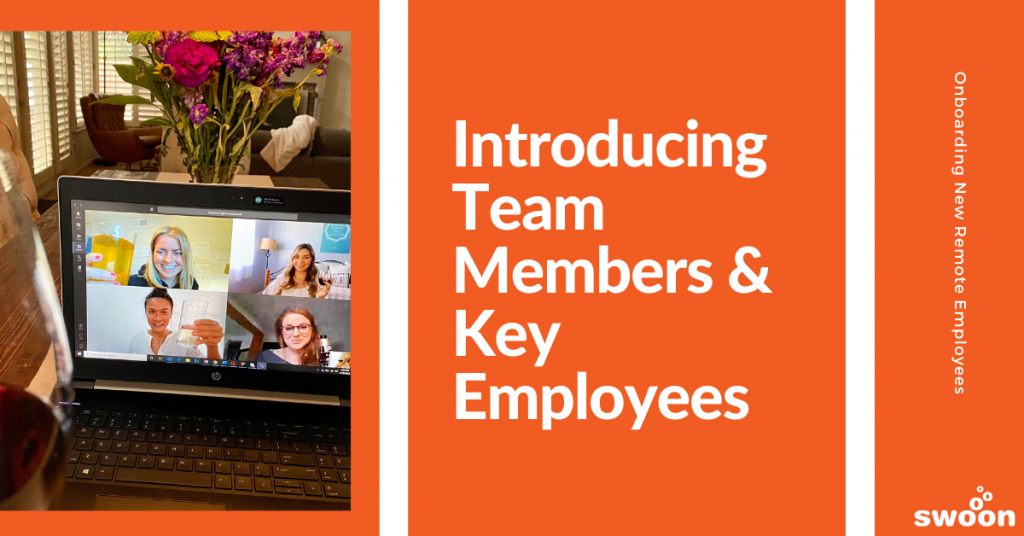
Onboarding New Remote Hires
Companies are still hiring but are now faced with a new challenge – onboarding new hires remotely. As employers, it’s important to set the groundwork for bonding, culture and expectations in order to be successful. Being that many of our clients are facing similar challenges, we wanted to share a few best practices that will set you new team members up for success.

Integrating New Hires
Starting your onboarding process before their start date ensures that your new hire will have everything that they need to hit the ground running. Some suggestions on items to send before their first day include:
- Welcome email and team introduction
- HR/company documents
- All proper equipment/technology
- The information they should know before their first day
- Their onboarding schedule—this way they can be prepared for what their first week will entail
- Company swag to feel a part of the team and get excited for their new role

Tech Should Be First Priority
Let’s take a minute and put ourselves in the position of the new hire. Starting a new job can be stressful enough without adding in the issue of not knowing how the various software platforms and communication channels work. We find that sending new hires their equipment and online tutorials/manuals before their first day helps them to feel prepared and eases any unnecessary stress. You’ll want to make sure that you have a follow up IT training scheduled for the first or second day. That way, any questions that your new hires have after watching the tutorials or reading the manual can be answered right away.
Things to cover during your IT training could include:
- Company email
- Group messaging tool
- Video communication software
- File-sharing applications (Google Drive, Dropbox, Microsoft OneDrive, etc.)
- Computer and email security applications

Demonstrating Culture
We know this can be a challenging thing to do through an online platform. But, taking the time to show your company’s culture can really add value to the new hire’s first week. Through video calls, you can accurately demonstrate your company’s culture while offering a way for everyone to feel included in their first week. It also allows you to introduce them to higher-level executives, either through a video conference call or a prerecorded video. Some video topic ideas to show your company culture can include:
- Welcome video or video call from your CEO or President and other team members
- Your culture, organizational values and mission, the history of the organization, etc.
- Inspirational messages from a member of your leadership team
- Retreat, event, volunteering, etc. footage from before everyone was social distancing

Setting Expectations
When working remotely and bringing on new employees, managers should be prepared to set specific goals and expectations early on. You don’t want them to have to wait for their manager or team lead to get online to learn what their next tasks are for that day. This wastes time and may cause unnecessary stress. You’ll want to make sure that your hiring managers:
- Develop and share a task calendar with their new hires after their training and onboarding sessions are complete
- Define short-term and long-term goals
- Schedule weekly one-on-one meetings to discuss upcoming projects, progress, resolve any issues they are facing, and overall just check in with how things are going

Introducing Team Members and Key Employees
We all know that starting a remote role can leave some feeling isolated and even left out from the team. They haven’t had the chance to connect with the team and doing so online can prove to be very challenging. But, building relationships is well worth the effort! Set up one-on-one meetings and/or a group call so employees can meet the people they will be working with. Not only does this open a path for communication, but it also allows them to feel included within their team. Try having the manager set up bi-weekly team meetings, virtual happy hours or an open chat channel to give everyone on their team time to talk with their new coworker.

Arrange Trainings
Now we know that this is probably self-explanatory, but make sure you set aside time for the new hires to sit down with a hiring manager or a team member to train them on their role. This can be very similar to how you train in the office; however, you will need to adapt to be virtual. Screen sharing is a great way to keep things simple. We find that this is the easiest way to adapt, and it allows the new hire to ask questions in real-time, something that might be more difficult if you were to only do a prerecorded training.

Improving Your Process
Continue to improve your onboarding process to find what bests works for your team and your culture. Ask for feedback and don’t be afraid to be creative in tackling these new challenges. We predict remote hiring will become even more common, so this is a great time to build onto an ongoing process.

